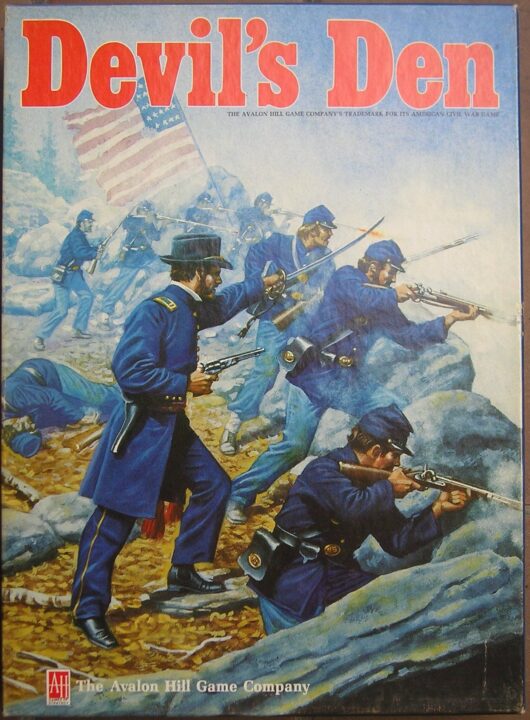Welcome, game lovers! If you’ve ever wondered what it’s like to lay a trap for your friends while arguing over who forgot the snacks, you’ll want to stick around for my review of Devil’s Den. I roped my usual crew into a session (with promises of pizza) and let’s just say the game delivered more dramatic moments than my Aunt Rita’s last birthday. Is it all spooky fun and fair play, or just a devilishly frustrating mess? Let’s find out.
How It Plays
Setting up
Give each player a den board, devil tokens, and a random secret card. Place the main board in the middle. Shuffle the event deck and put it nearby. Snacks for the table optional but highly recommened.
Gameplay
Players take turns drawing event cards, moving their devil tokens, and trying to sabotage others’ dens with sneaky actions. You can bargain, trade, or form quick alliances (which, let’s be honest, last about two turns). Keep an eye on what others are up to, or you might wake up with your den full of curses.
Winning the Game
Once the event deck runs out, everyone tallies up points for saved resources and completed secret cards. The player who has the most points—and the least amount of curses in their den—claims victory and gets bragging rights until the next game night.
Want to know more? Read our extensive strategy guide for Devil’s Den.
Why Game Balance and Fairness Matter in Devil’s Den
Let me start by saying, you can have the prettiest board, the fanciest meeples, and the flashiest box cover. But if a game like Devil’s Den isn’t fair or balanced, you might as well be playing hungry hungry hippos with your elbows. I learned this the hard way after my friend Dave somehow won three games in a row just by rolling lucky dice. I started to think he’d made some dark deal with the game designer.
Balance in board games means every player stands a reasonable chance to win if they play smart. In Devil’s Den, the first few rounds felt good. Everyone gets the same starting resources and choices, which keeps things even. But as we played more, I noticed a nasty little gremlin lurking in the rules. Some cards are way more powerful than others, and if you manage to snag one early, you get a huge leg up for the rest of the game. It doesn’t break the game, but it can make things feel a bit lopsided if you care about strategy over dumb luck.
Now, let’s talk about fairness. The turn order in Devil’s Den shifts each round, which is nice. No one gets stuck always going last, staring at the scrap pile. But luck shows up too often for my taste. I’ve seen clever tactics go out the window because someone rolled high and grabbed all the best loot. It can get silly and a little frustrating, especially when the stakes are high and snacks are running low.
If you’re like me and love to out-think your friends, rather than out-luck them, Devil’s Den may leave you chewing the corner of your rulebook some nights. Next up, I’ll show you how players can turn the tables with strategy (and maybe a bit less luck) in Devil’s Den!
Player Interaction and Strategy in Devil’s Den
Let’s talk about player interaction in Devil’s Den. If you like games with table talk and the odd bit of sabotage, you’re in for a treat. The game basically begs you to mess with your friends, steal their stuff, and of course, blame the dog when someone accuses you of betrayal. During my second play, my pal Dave became a full-time villain, and we still haven’t forgiven him.
Each turn, you’ll need to read the room and guess who’s got what up their sleeve. Planning helps, but in this game, so does a poker face. I tried to outfox everyone, but my own face betrayed me—I don’t recommend giving away your devious plans via nervous giggling. For real though, making alliances, then breaking them, is half the fun here. Negotiation is pretty clutch, and holding grudges? That’s basically a winning strategy (as long as you’re not me… I just end up with more enemies than points).
Strategy in Devil’s Den is all about risk and timing. You need to snatch opportunities before someone else spots them—think less chess, more a frantic race for devilish loot. The game rewards bold moves, but if you poke the wrong player, you might end up getting ganged up on. Basically, if you like games where everyone is involved and actively plotting against each other, Devil’s Den will light up your game night like a bonfire in a fireworks shop.
Wondering if the cards and pieces match the fiery drama? Stick around—next up, I’m talking about Devil’s Den’s component quality and artwork, which might just make your eyes pop out (in a good way!).
Component Quality and Artwork in Devil’s Den
When my friends and I first opened Devil’s Den, we all went silent. Not because we were scared (okay, maybe a bit), but because the components looked top-notch. The board is thick, sturdy, and doesn’t fold weirdly after a couple games, which is nice because no one likes playing on a wonky battlefield. The cards almost feel like they are wearing raincoats—they’re that slick and tough. I once spilled a suspiciously red soda on one, and it survived. The tokens are chunky and satisfying to move, like little devil donuts! If you like dramatic clinking noises, you’ll be very happy.
The artwork is where Devil’s Den really stands out. Everything has this spooky, gothic vibe but with a hint of cheeky charm, almost like Tim Burton met up with a cartoonist after too much coffee. Each card features unique art, which my buddy Rick kept picking up just to look at instead of actually playing his turn. The board is dark, moody, and full of tiny details you won’t notice until your fifth game. If you’re a fan of cool minis, there are a few in here, and they’re not the bendy kind that look melted.
Honestly, if you judge a game by how it looks and feels, Devil’s Den punches way above its weight. Next, I’ll talk about how often you’ll want to drag this out—and how long you’ll actually be stuck in the den each session. Better clear your schedule!
How Many Times Can You Tempt Fate? Replay Value and Game Length in Devil’s Den
If you ask my friend Tim, he’ll tell you Devil’s Den is a game you can play over and over—mainly because he keeps losing and swears this is the time he wins. I appreciate his enthusiasm (and his delicious snack selection), but let’s get honest: does Devil’s Den have real replay value?
Short answer: mostly, yes! Every session I played came with a unique flavor. The changing set-up and different ways you can scheme mean no two games felt the same. You’re always guessing which way your rivals will swing and who’s bluffing about their secret objectives. It’s especially spicy with four players, because that’s when all the wild plans and betrayals come out. I’ve seen alliances last about as long as a chocolate bar in my house—gone before you even get used to the idea.
Game length is another win. Devil’s Den doesn’t overstay its welcome. My matches usually clocked in at around 40 to 60 minutes. Long enough for some drama, but short enough you won’t lose your will to live. Rarely does it drag, unless your pal, Jess, takes ten minutes for every turn. (Jess, if you read this, please pick up the pace.)
If you like outthinking your pals and don’t mind a hint of chaos, Devil’s Den is worth keeping on your shelf. I wouldn’t play twice in a row, but it’s one I want to come back to on game nights. If you love fair chances and clever plans, I say: give it a go!
Conclusion
That wraps up my review of Devil’s Den! It’s a good time if you love sabotage, plotting with friends, and spooky art. The components look top notch and you’ll get wild moments, thanks to some fun player tricks. That said, luck can tip the scales and a few cards feel a tad unfair. Still, I had laughs and wild stories to tell after every session. If you want a tense game night, Devil’s Den is worth a look—just don’t play with sore losers or you’ll never hear the end of it! Enjoy plotting, and may the dice be less evil to you than they were to me.


